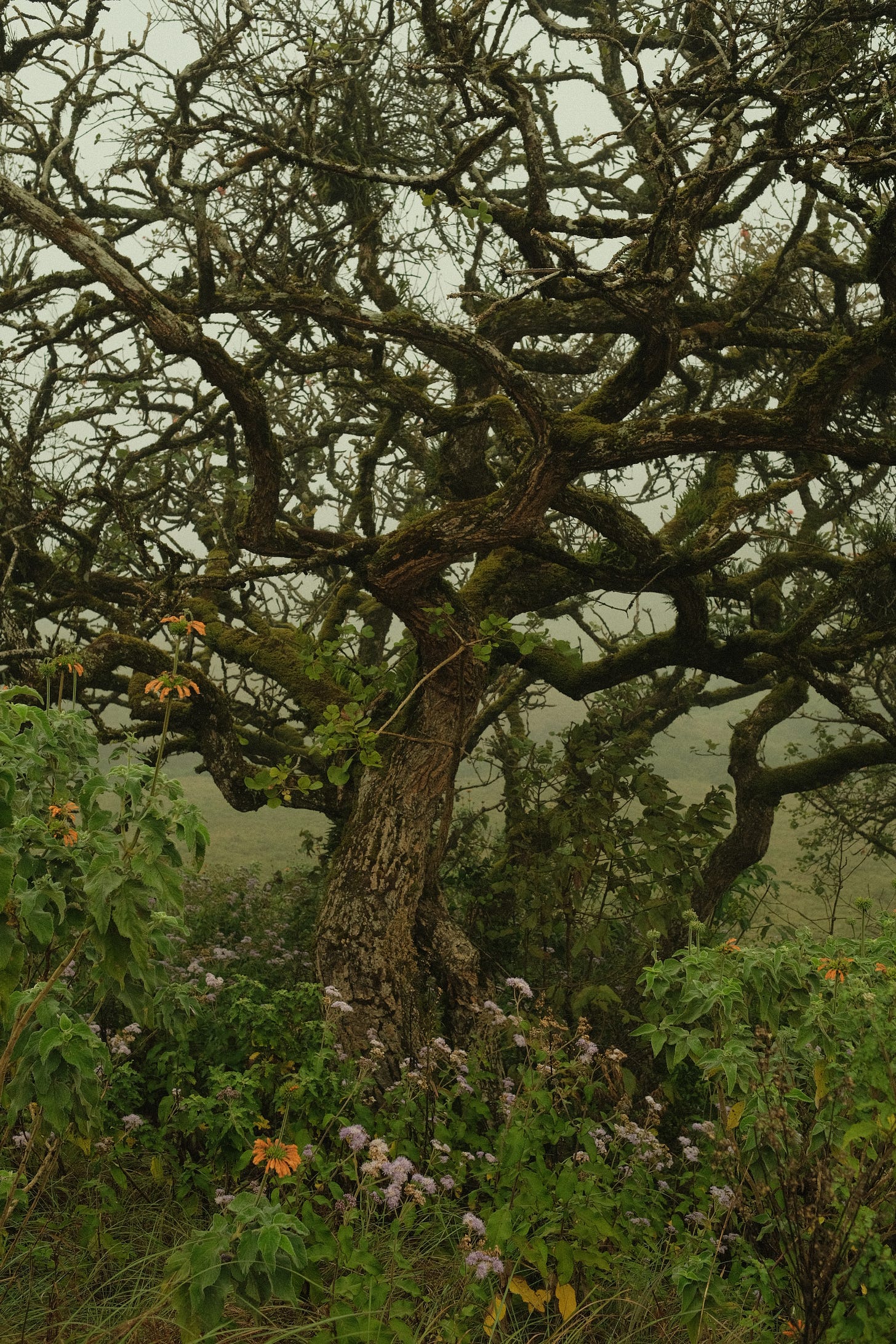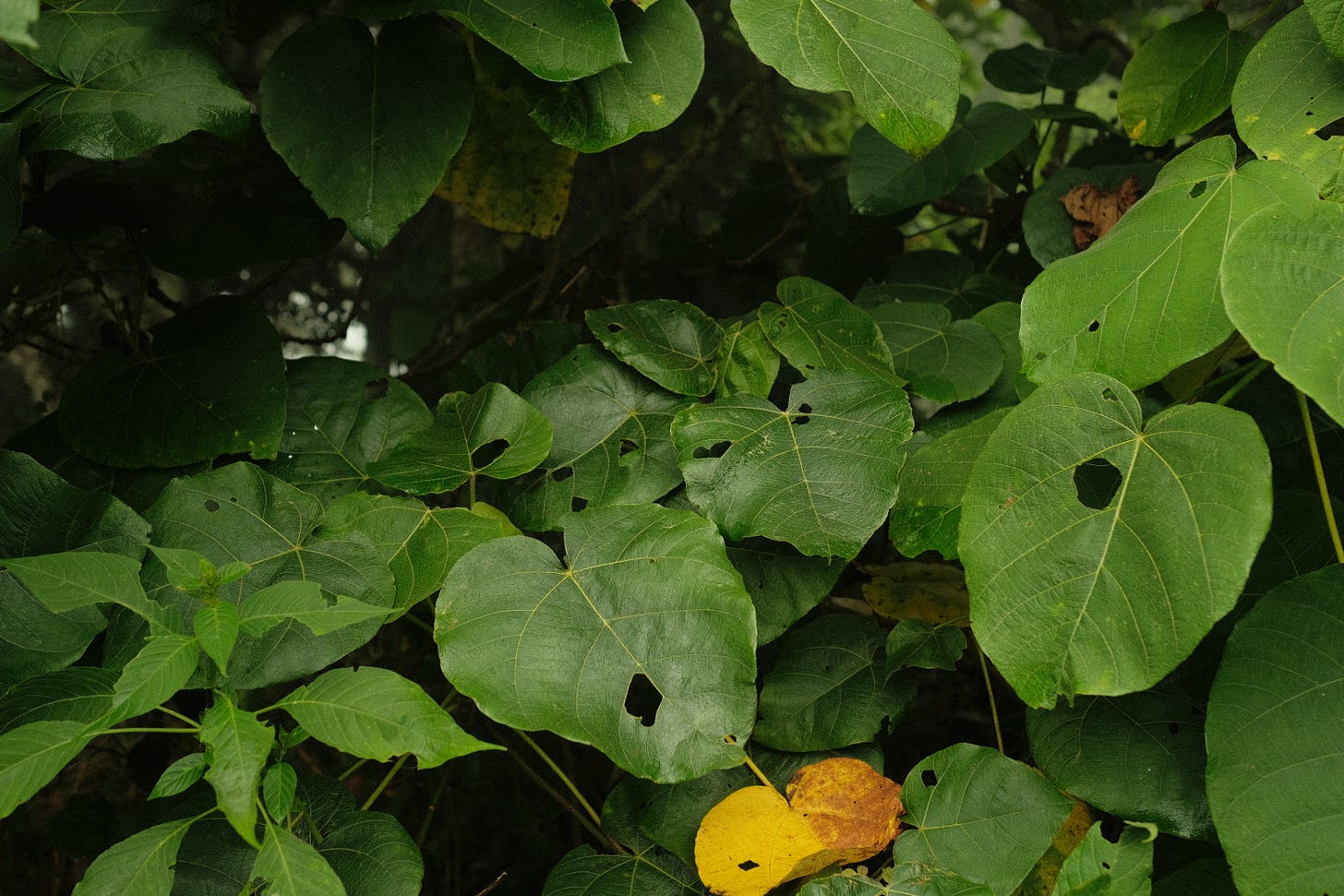Merin pointed out of the truck as we came to an abrupt stop. The morning air was still crisp and cold as it awaited the afternoon sun. There hung a thick mist obscuring the view of the tops of the hills. In just over a thousand feet of elevation gain, the flora was rapidly changing. The beige hues that riddled the landscape adopted some green, and the thorny bushes were replaced by thick ferns and Kenya’s famous Redhot Poker Trees. This part of Africa gets little rain throughout the year, and the vegetation reflects that fact. Most living things have adapted to survive in this harsh environment. Joseph Krutch correctly pointed out in his book The Voice of the Desert that “individuality and character are developed by challenge” and that “plants and animals are so obviously and visibly what they are because of the problems they have solved.” Southern Kenya parallels Krutch’s rules of the desert.
The silence that ensued as the engine was cut reminded me of childhood in the hills near my home. Only now, I was a world away. At the tip of Merin’s extended arm, about 20 yards away, stood a large male cheetah. It paused, staring back at us. Half of its body was covered in the roadside brush. A master of stealth, the spotted pattern on the cheetah is a response to its prey’s vision—or lack thereof. Merin explained that it was rare to see a cheetah by itself. They often traveled in pairs, typically two brothers wandering through life together. Even for us humans, seeing how well it blended in with the grass was astonishing. We sat there and exchanged some mental conversation; I, inspired by its ability to adapt and thrive in such an incredibly hostile environment, and it, wondering what my true intentions were. Before long, it decided to continue on. As it slipped into the brush, my vision blurred, and I could no longer track its shape. Our encounter was magical—almost mythical. I sat there in awe of a creature that I had grown up watching on National Geographic and analyzing in school books.
Merin turned on the engine, and we started slowly up the hillside, following a road that was half volcanic rock and half overgrown shrubs and grass. The new landscape seemed alien compared to the rest of the region. An elevated oasis of sorts. Our destination was close. The local people talk about these hills as a source of life. There are stories about how treks to the Cloud Forest induced rain during droughts. How all the animals in the kingdom come here for rejuvenation and spiritual awakening. The thick mist settled on my forehead as we drove further and further up the mountain. As I wiped my face with a bandana, I thought about what we would see in the Cloud Forest. This sacred place where few have ventured. Those who have, return with a new sense of belonging—with a greater connection to the world around them.
The truck stopped once again, and this time, it was our turn to disappear into the brush and chaparral of the hillside. To be engulfed in the fog, only to return with a higher sense of being.











